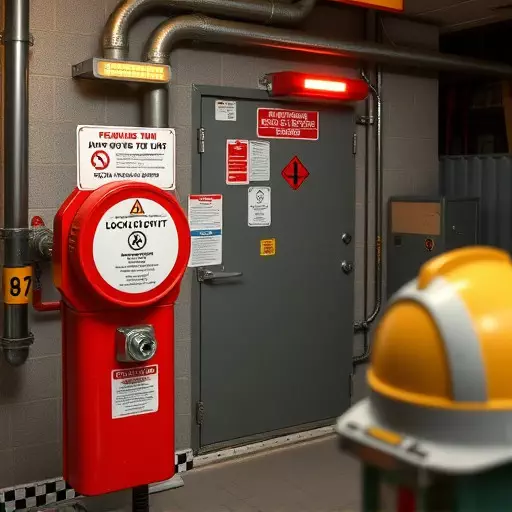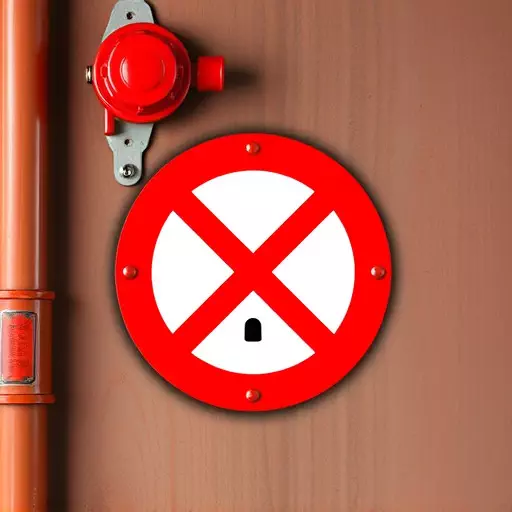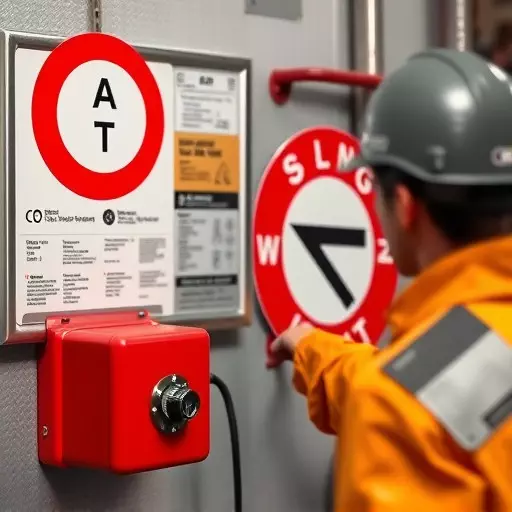Lockout/Tagout (L/T) is a critical safety practice for preventing energy source activation during maintenance. Adhering to OSHA's 1910.147 standards through comprehensive L/T training protects workers from electrical and other hazards, reduces workplace injuries, and fosters a culture of safety. This involves identifying all potential energy sources, using lockout devices and tags to de-energize equipment, and maintaining detailed records. Regular interactive training sessions, hands-on exercises, and scenario-based learning are essential for effective L/T compliance, empowering employees to handle locked-out machinery safely. Continuous monitoring through inspections, incident reporting, and data-driven improvements ensures the program's effectiveness. Key focus areas include lockout tagout compliance training and energy control procedures training.
In today’s industrial landscape, ensuring worker safety during equipment maintenance and repair is paramount. Lockout/Tagout (L/T) programs play a crucial role in preventing accidents and injuries by de-energizing hazardous machinery. This comprehensive guide delves into the development of effective L/T programs, covering OSHA’s regulations and legal framework, key components for program creation, energy control procedures training, and strategies to achieve compliance. By understanding these aspects, organizations can safeguard workers in hazardous environments through robust lockout tagout compliance training.
- Understanding Lockout/Tagout: A Foundation for Safety
- OSHA's Role and the Legal Framework Behind Lockout/Tagout
- Developing a Comprehensive Lockout Tagout Program: Key Components
- Energy Control Procedures: Safeguarding Workers in Hazardous Environments
- Training Strategies for Effective Lockout/Tagout Compliance
- Implementation, Monitoring, and Continuous Improvement of L/T Programs
Understanding Lockout/Tagout: A Foundation for Safety

Lockout/Tagout (L/T) is a critical safety practice designed to prevent accidental activation of energy sources during maintenance or repair activities. It involves specific procedures to control and isolate energy to ensure workers’ safety while performing tasks on equipment. The foundation of any effective L/T program lies in understanding OSHA’s lockout tagout standards, which provide guidelines for implementing these critical safety measures.
Compliance with these standards is essential to prevent accidents, injuries, and fatalities. Energy control procedures training should cover various aspects, including identifying energy sources, applying appropriate locks and tags, and de-energizing equipment systematically. By adhering to OSHA’s lockout tagout compliance training requirements, organizations can create a safer work environment, reduce risks, and foster a culture of safety among their workforce.
OSHA's Role and the Legal Framework Behind Lockout/Tagout

OSHA plays a pivotal role in ensuring workplace safety and health, particularly regarding energy control procedures. The agency has established comprehensive lockout/tagout standards (1910.147) to protect workers from electrical hazards and other risks associated with equipment de-energization. These standards govern the development and implementation of lockout tagout compliance training programs, which are essential for organizations dealing with potentially dangerous energy sources.
The legal framework behind these standards mandates that employers provide comprehensive lockout tagout training to employees, ensuring they understand the procedures for safely isolating and securing equipment before performing maintenance or repair work. This includes teaching workers how to use lockout devices, tags, and other control mechanisms to prevent accidental activation of equipment. By adhering to OSHA’s lockout tagout standards, companies not only comply with legal requirements but also foster a culture of safety and accountability, ultimately safeguarding their workforce from preventable injuries.
Developing a Comprehensive Lockout Tagout Program: Key Components
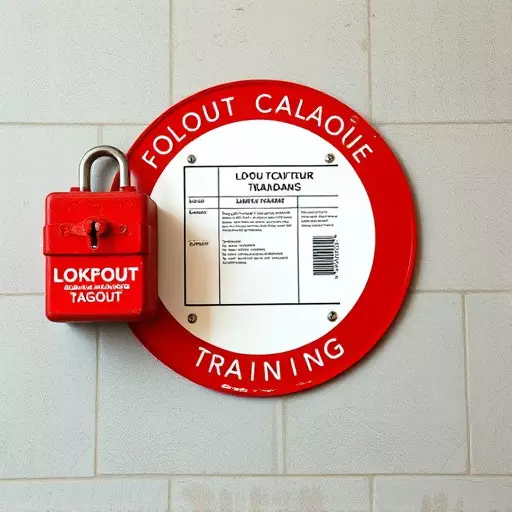
Developing a comprehensive lockout/tagout program is essential for any industry to ensure worker safety and OSHA lockout tagout compliance. This process involves several key components that, when integrated effectively, create a robust system for managing hazardous energy sources during maintenance or repair activities. Firstly, identifying all potential energy hazards within the workplace is crucial. This includes electrical, mechanical, hydraulic, pneumatic, chemical, and other forms of energy that could pose a risk if not properly controlled.
Once these hazards are identified, establishing clear energy control procedures becomes vital. These procedures should dictate how to isolate and de-energize equipment safely, using methods such as lockout devices, tagout tags, or other approved means. Regular, thorough training on these procedures is essential for all employees, especially those tasked with implementing them. Additionally, maintaining detailed records of training sessions, inspections, and adjustments to the program ensures its ongoing effectiveness and complies with OSHA’s lockout tagout standards.
Energy Control Procedures: Safeguarding Workers in Hazardous Environments
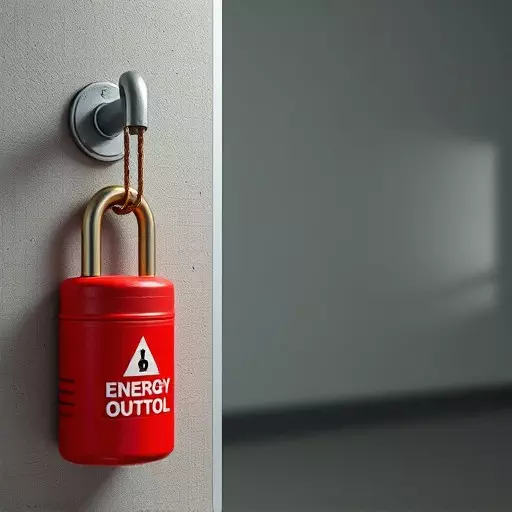
In hazardous industrial environments, energy control procedures play a pivotal role in worker safety, aligning with OSHA’s lockout/tagout standards to prevent unexpected machine activation and related accidents. Effective energy control training is essential for employees to understand their responsibilities during equipment maintenance or repair. This includes identifying potential hazards, implementing proper de-energization techniques, and utilizing reliable locking devices to secure energy sources.
Lockout/tagout compliance training equips workers with the knowledge to safely manage energy sources, reducing risks significantly. By learning to isolate energy supplies through procedures tailored to specific equipment, employees can contribute to a safer workplace. Such training is crucial for preventing injuries or worse in high-risk scenarios, ensuring that maintenance and repair tasks are performed without exposing workers to potentially deadly hazards.
Training Strategies for Effective Lockout/Tagout Compliance
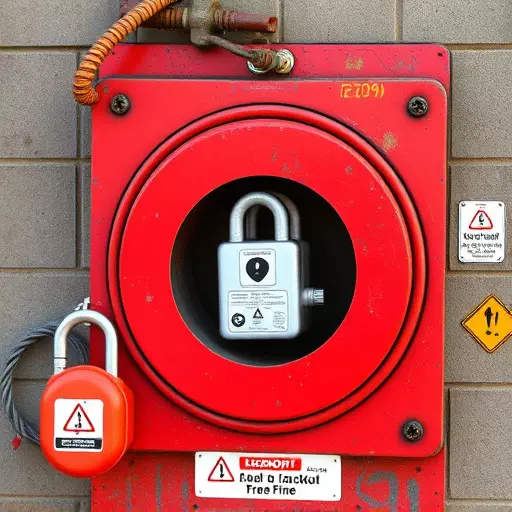
Effective lockout/tagout (L/T) compliance goes beyond simply implementing procedures; it requires comprehensive training strategies that educate workers on the importance and proper execution of energy control procedures. Organizations should provide regular L/T compliance training, focusing on OSHA’s lockout tagout standards, to ensure everyone understands their roles and responsibilities. This includes demonstrating the use of locking devices, tags, and other energy control equipment, as well as reinforcing safe work practices when dealing with locked-out equipment.
Training sessions should be interactive and practical, involving hands-on exercises and scenario-based learning. By participating in simulated lockout situations, workers gain real-world experience and better grasp the critical nature of their actions. Additionally, integrating energy control procedures training into existing safety programs and regular meetings can foster a culture of continuous improvement and proactive compliance, ultimately reducing risks associated with locked-out equipment.
Implementation, Monitoring, and Continuous Improvement of L/T Programs

Implementing a robust Lockout/Tagout (L/T) program involves more than just setting protocols; it requires meticulous planning and ongoing dedication to ensure safety in industrial settings. This process begins with comprehensive training for all employees, focusing on OSHA lockout tagout standards and energy control procedures. Equipping workers with the knowledge to identify potential hazards and properly execute L/T techniques is paramount. Regular simulation exercises can significantly enhance their understanding and readiness.
Monitoring is a critical phase that includes rigorous inspections and incident reporting. Regular reviews of equipment, tools, and work procedures help identify gaps or non-compliance with OSHA guidelines. These insights drive continuous improvement initiatives, where adjustments are made to energy control measures based on performance data. This iterative process guarantees that the L/T program remains effective, adaptable, and aligned with best practices in industrial safety.
